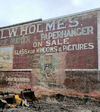- Thread starter
- Banned
- #51
Adagio for Strings, Op. 11 · Samuel Barber · New York Philharmonic Orchestra · conductor: Leonard Bernstein.
Follow along with the video below to see how to install our site as a web app on your home screen.
Note: This feature may not be available in some browsers.

French connections again ……...
The Reels:
Nina:
Bowie:
View attachment 2027699
Fassbinder:
To finish here …….
Abigail:
I liked when Mick Harvey tackled Gainsbourg
Yep,Bonnie and Clyde for the winBetter than Abigail you reckon ?


